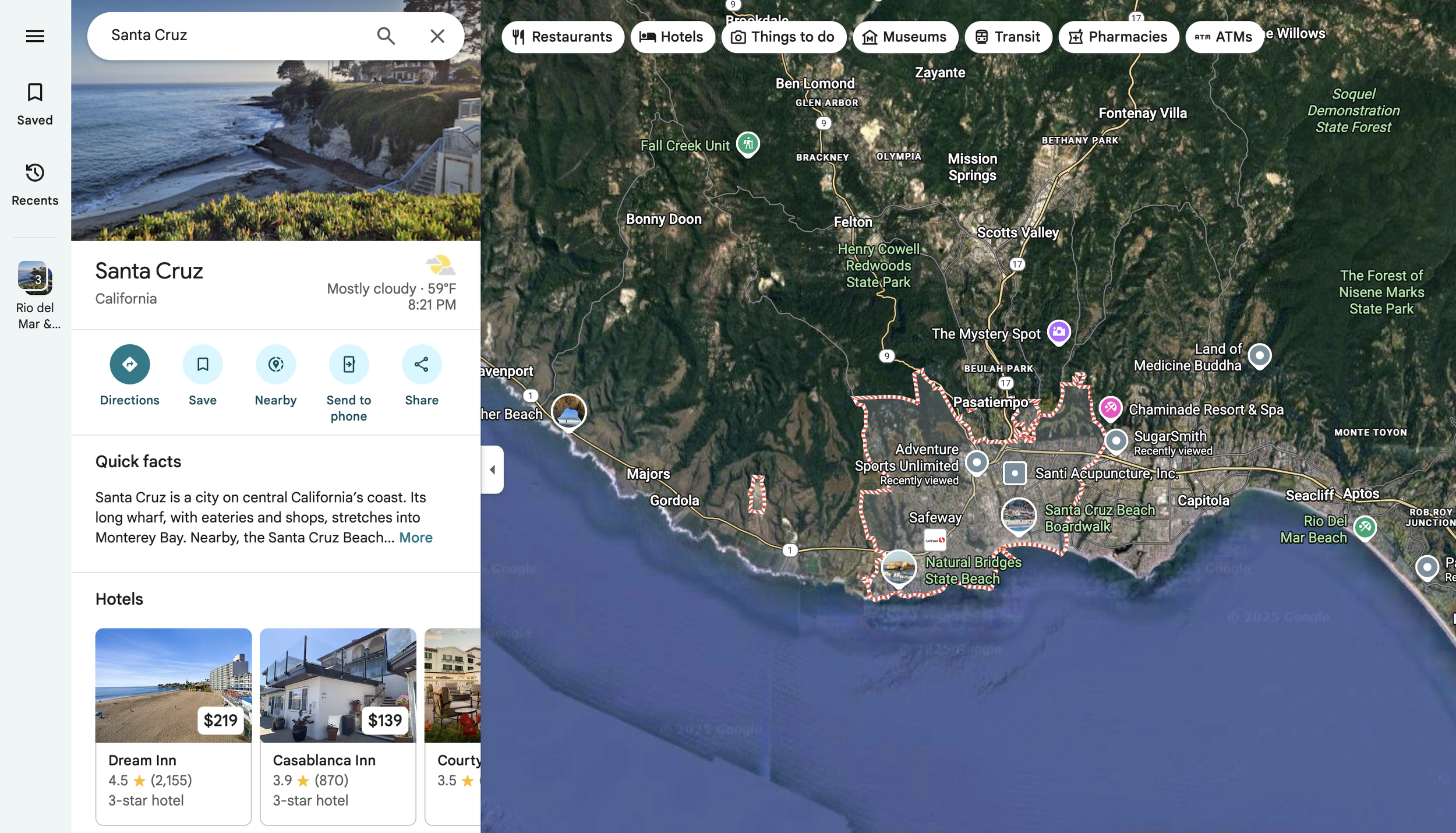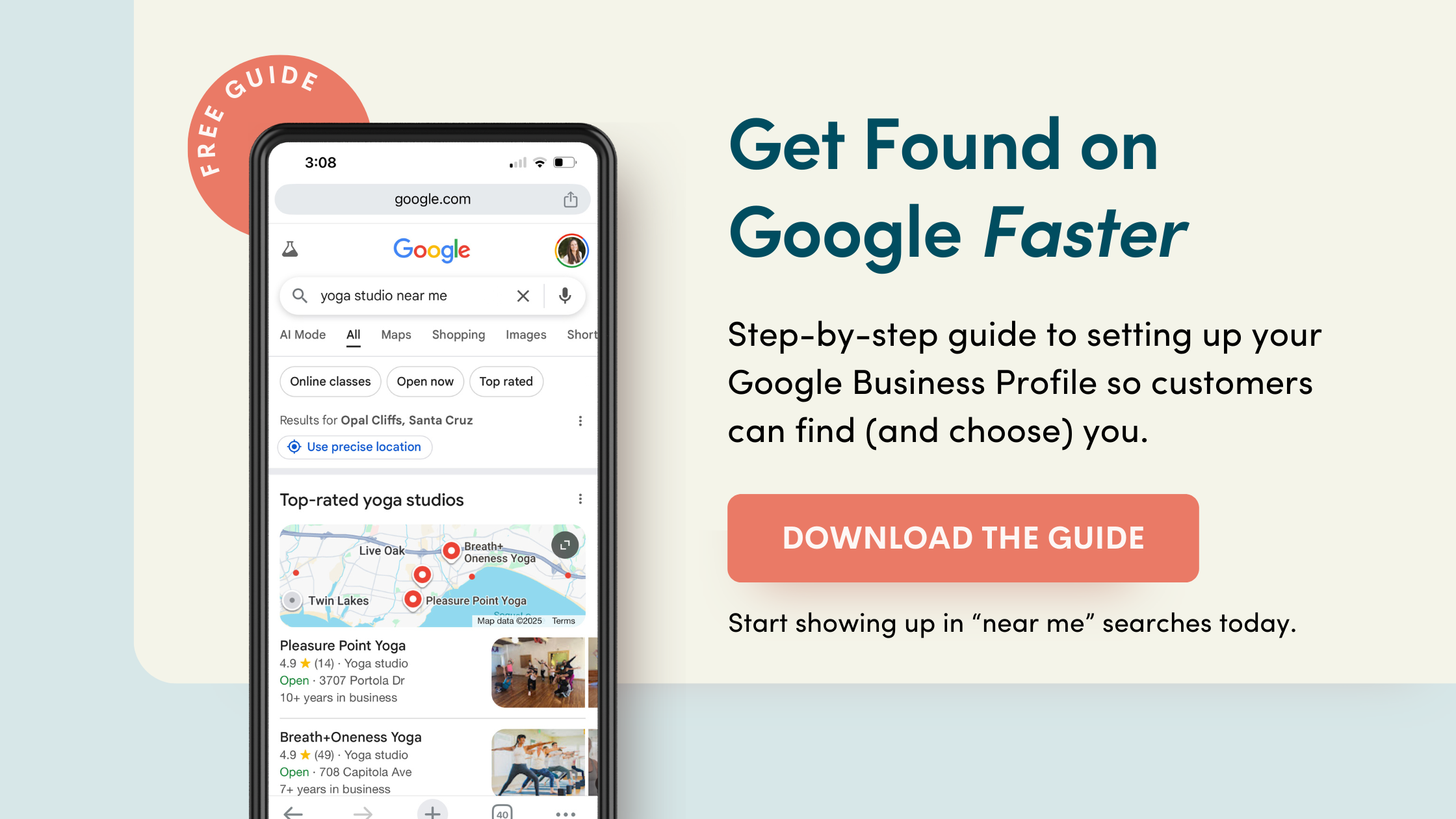Local SEO Strategy for Small Businesses: A Step-by-Step Guide to Get Found, Trusted, and Chosen Online.
A local boutique owner once told me,
“I post on Instagram every day, but when people Google ‘shops near me,’ I’m invisible.”
She had great products, loyal customers, and window displays that could stop traffic — but online? Crickets.
Fast forward a few months, she was showing up for “women’s clothing in Santa Barbara,” and new customers were walking in saying, “I found you on Google!”
That’s the quiet power of local SEO — connecting your real-world effort to the digital world that decides who gets seen.
And here’s the best part: it doesn’t have to be complicated, technical, or expensive. Whether you’re a solo business owner or have a small team, this guide will show you the exact steps to help your business show up, stand out, and get chosen online.
Step 1: Understand Your Local Market (and What Google Sees That You Don’t)
Before you tweak your website or claim your Google listing, you need to understand the lay of the land — your customers, your competitors, and what Google already sees.
Quick version: You can’t market where you don’t know the map.
The deeper dive:
Head to Google Maps and type in your business category (“clothing store,” “florist,” “accountant”) + your city.
Take note of who shows up first, what language they use, and what kind of photos or reviews stand out.
That’s your local competition — the businesses Google currently “trusts” most.
Google’s basically your nosy neighbour with a data obsession. It pays attention to who’s popular, credible, and active online.
Pro tip: If your store’s address is outside the main city center, tweak your Google Business service area or page copy to reference the neighborhoods you want to serve.
👉 Want to see how visible your business really is? Try Aviso’s Local SEO Audit. We’ll map out where you’re showing up (and where you’re not).
Step 2: Make Sure Google Knows Who You Are (Your Digital Business Card)
Think of this as properly introducing yourself to Google — confidently, not mumbling.
At minimum, you’ll want to have your:
✅ Business name
✅ Address or service area
✅ Phone number
✅ Website
✅ Hours
✅ Photos
✅ A short description of what you do and who you serve
And here’s the kicker — this info has to match everywhere you show up online.
Google loves consistency. Typos, old phone numbers, or “Ave” vs. “Avenue”? That stuff confuses the algorithm and customers alike.
Pro tip: Keep a single “master file” with your up-to-date business info. Anytime something changes, update it across every platform.
Step 3: Build a Local-Friendly Website (That Humans and Google Both Love)
Think of it like your digital storefront. The layout should make sense, the signs should be clear, and Google should know exactly what you sell and where you’re located.
Start simple:
Home page: who you are, what you do, where you’re located
Service or product pages: one per service/category (Google loves clarity)
About page: tell your story — people buy from people
Contact page: make it obvious how to reach you
Now for the part most small business owners skip — the SEO basics on your site pages.
Here’s your cheat sheet:
H1 (page headline): The main title on your page. Keep it natural, but include your key phrase — like “Handmade Jewelry in Asheville.”
SEO title: This is what shows up in Google results. Think of it like your page’s billboard — clear, clickable, around 60 characters.
Meta description: The short blurb that appears under your title in Google. Write it like a mini ad — around 150 characters that make someone want to click.
Image alt text: A short description of what’s in each photo (“handmade turquoise necklace displayed in Asheville boutique”). This helps Google and makes your site more accessible.
And when you write your copy, use your city and neighborhood naturally — not stuffed in every sentence.
Instead of:
“We’re a boutique that sells handmade goods.”
Try:
“We’re a locally owned boutique in Asheville specializing in handmade, sustainable pieces.”
One tells Google what you do. The other tells Google what, where, and for whom.
Pro tip: Add clear calls-to-action (“Shop now,” “Book a consult,” “Visit our store”) so visitors know exactly what to do next — and you turn browsers into buyers.
Step 4: Claim and Optimize Your Google Business Profile
If you do just one thing after reading this post — make it this.
Your Google Business Profile (GBP) is what appears in Maps and the “local 3-pack” at the top of search results.
Fill it out completely. Add fresh photos. Update your posts. Respond to reviews. Treat it like your online storefront — one that never closes.
Pro tip: Write your business description like a human, not a robot. “A family-owned shop serving [city] since 2012” beats keyword stuffing every time.
Step 5: Earn (and Manage) Reviews Like a Pro
Reviews are the digital version of word-of-mouth — and they’re one of Google’s strongest ranking signals.
How to get them:
Ask happy customers right after they buy (in person, by text, or email).
Share your review link directly — don’t make them hunt for it.
Respond to every review — even the bad ones.
A thoughtful, calm reply to a negative review builds more trust than a dozen 5-stars ever could.
Pro tip: Don’t buy or “trade” reviews. Google’s smarter than that.
If you want to make review-gathering easier, we can automate it for you. Find out how.
Step 6: Get Listed (The Right Way)
The more places your business shows up, the more “trust signals” you send to Google.
Start with:
Google Business Profile
Apple Maps
Yelp
Facebook
LinkedIn
Local directories (Chamber of Commerce, city guides, etc.)
Industry-specific platforms (TripAdvisor, Houzz, Healthgrades, etc.)
The golden rule? Consistency. Same info everywhere.
Explore how we can help with our Listings & Citation building services.
Step 7: Keep Showing Up on Social (Google Notices That Too)
Social proof matters — not just for your audience, but for Google too.
You don’t need to post daily. Just show up regularly with content that reflects your brand’s personality:
🎥 Behind-the-scenes clips
📦 New product arrivals
🧵 Customer stories
💬 Helpful tips
Social content keeps your business “alive” online. The more engaged your brand looks, the more credible it appears — both to people and to search engines.
And yup, we can help manage your social media.
Step 8: Measure What Matters (Without the Data Headache)
No need for fancy dashboards — just track what shows progress.
Use:
📍 Google Business Insights – calls, clicks, directions
📊 Google Analytics – website traffic and engagement
🔍 Google Search Console – keywords you’re showing up for
Look for steady growth over time. SEO isn’t instant coffee — it’s more like a slow brew that gets better with consistency. ☕
Pro tip: Don’t obsess over being #1. Focus on being found by the right people at the right time.
Wrapping It Up: Be Found, Be Trusted, Be Chosen
Local SEO isn’t about gaming algorithms — it’s about connecting your business to the people already looking for what you offer.
When your brand shows up where it matters — in Google, Maps, and your customers’ minds — you don’t just get clicks.
You get customers walking through your door.
👉 Work with Aviso Studios and let’s make that happen. We’ll handle the SEO side so you can focus on doing what you do best: running your business.
Schedule a Discovery Call → let’s find your best next step.
Explore SEO Services → and start getting found online.


